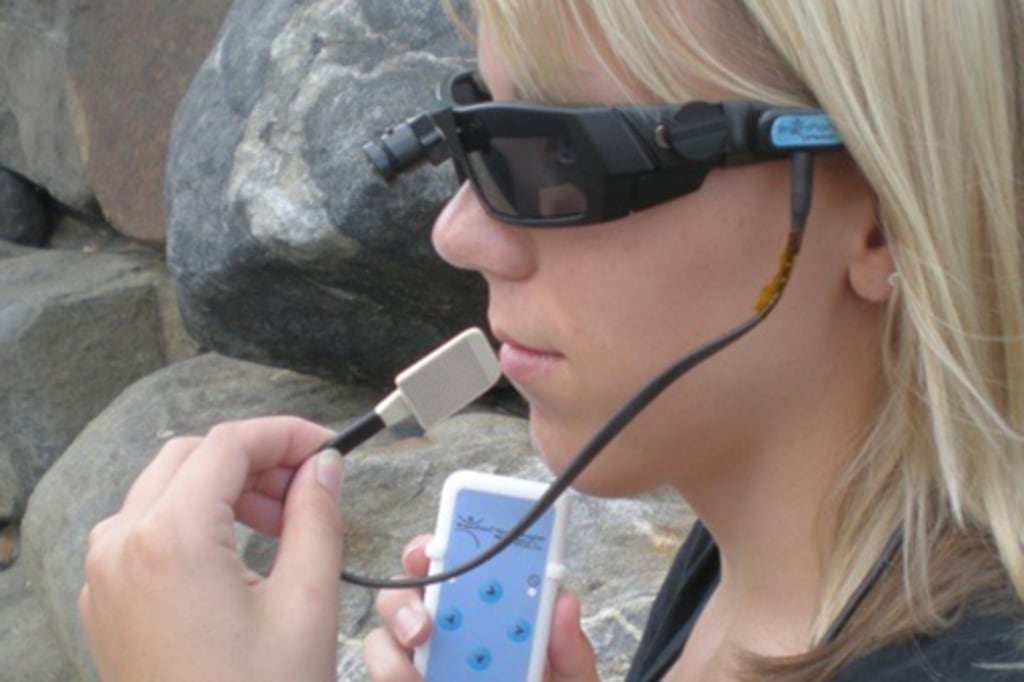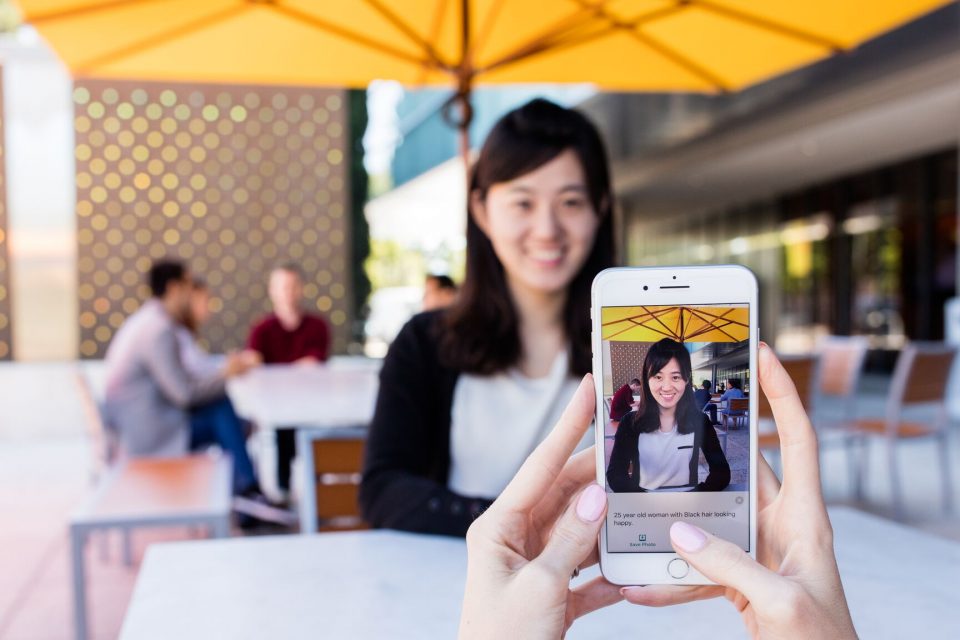Discover Cutting-edge Devices Designed for the Visually Damaged
The advancement of ingenious devices for the aesthetically impaired represents a considerable advancement in access and self-reliance. Technologies such as wise glasses with AI capacities and mobile applications made to give auditory descriptions are improving day-to-day experiences for individuals.
Smart Glasses for Navigation

Smart glasses designed for navigation are changing the method visually impaired individuals engage with their setting. These sophisticated gadgets utilize a mix of video camera technology, artificial knowledge, and acoustic comments to offer real-time details about environments. By utilizing barrier discovery systems, wise glasses can signal customers to prospective dangers, enabling more secure flexibility in both familiar and unknown setups.
The combination of GPS innovation better boosts navigating capacities, permitting users to get auditory instructions as they relocate. This hands-free strategy not only fosters freedom but likewise equips visually impaired individuals to navigate metropolitan landscapes with increased self-confidence. Furthermore, lots of clever glasses are outfitted with attributes that determine spots and road indications, giving contextual details that boosts the customer experience.
In addition, the development of these gadgets is continually advancing, with firms working to enhance the accuracy of things recognition and expand the variety of navigational functions. As wise glasses become a lot more budget-friendly and available, they hold the potential to dramatically transform daily life for visually damaged individuals. Inevitably, these ingenious devices stand for a vital step toward inclusivity, offering improved flexibility and a higher sense of autonomy for people navigating the globe around them.

Mobile Apps for Daily Living
Just how can mobile applications boost the every day lives of visually damaged individuals? Mobile apps are changing the way aesthetically damaged customers browse their environments, take care of everyday tasks, and access details. These applications offer vital support with various capabilities, fostering freedom and enhancing lifestyle.
A number of ingenious mobile apps are designed specifically for everyday living. As an example, apps like Be My Eyes connect aesthetically damaged users with sighted volunteers through video clip telephone calls, permitting them to receive real-time help with jobs such as reviewing tags or navigating unfamiliar rooms. In A Similar Way, Seeing AI, created by Microsoft, uses expert system to define surroundings, read text, and recognize objects, efficiently changing a smart device into an effective tool for everyday aid.
Furthermore, navigating apps tailored for the visually damaged, such as Aira and BlindSquare, provide audio-based instructions and ecological information, allowing customers to traverse their environments securely and with confidence. Past navigating and instant assistance, mobile apps also support company and job monitoring, with functions that aid users set reminders, create order of business, and track appointments. In recap, mobile applications serve as indispensable sources, equipping visually damaged individuals to lead even more independent and satisfying lives.
Wearable Technologies for Assistance
Empowerment with innovation is progressively apparent in the world of wearable tools designed to assist aesthetically impaired individuals. These cutting-edge tools incorporate perfectly into day-to-day live, enhancing navigating and giving essential responses to customers. Clever glasses outfitted with electronic cameras can recognize faces and read text aloud, allowing users to interact more confidently in professional and social setups.
An additional remarkable development is using haptic responses systems in wearable tools. These systems utilize vibrations or various other tactile signals to share info about the customer's view it now atmosphere, such as barriers or adjustments in terrain, boosting flexibility and safety and security. Wearable modern technologies also consist of wristbands that attach to smart devices, notifying individuals to notices with refined resonances, therefore improving connectivity without dependence on aesthetic cues.
As these modern technologies continue to evolve, they are not just boosting self-reliance for aesthetically damaged individuals however likewise cultivating a higher feeling of inclusion in society. By linking the space in between difficulties dealt with in day-to-day living and the possibility for autonomy, wearable modern technologies serve as crucial tools in the quest for equality and empowerment for those with aesthetic impairments.
Audio Summary Devices
Audio summary devices play an essential function in boosting availability for visually damaged people, giving them with the capacity to involve with visual media. OCR devices for the blind. These tools supply narrated descriptions of vital aesthetic elements in movies, television programs, and live performances, making certain that individuals can fully understand the context and feelings communicated via visuals
Audio summary can be incorporated into various systems, consisting of streaming solutions, cinema testings, and live movie theater. Lots of popular streaming services now include audio summary as an accessibility attribute, enabling customers to choose it quickly. Along with conventional media, specialized apps additionally exist, giving audio summaries for art events, galleries, and other cultural occasions.
The performance of audio description rests on the ability of the narrators, who should convey visual details succinctly without interfering with the original audio. Developments in this field are additionally leading the way for even more individualized experiences, where customers can adjust the degree of information and pacing according to their preferences.
Braille Innovations and Tools
Braille devices and innovations have significantly changed the means visually impaired individuals communicate with text and information. Modern advancements have actually led to the growth of versatile tools that enhance proficiency and freedom among customers.
Additionally, portable Braille notetakers combine typical Braille input half moon reading glasses with modern functionalities, facilitating note-taking, organizing, and paper editing and enhancing on the go. AI-powered visual aids. These portable tools commonly feature text-to-speech abilities, bridging the space between Braille and acoustic info
Furthermore, innovative Braille printers have arised, permitting individuals to generate Braille tags, files, and academic materials effectively. This availability cultivates better involvement in academic and professional environments, ultimately promoting inclusivity.
Additionally, study right into smart Braille technologies remains to increase. Devices that incorporate fabricated knowledge are being checked out to supply real-time navigation aid and contextual information, improving the individual experience in diverse setups. Generally, these technologies reflect a dedication to empowering visually impaired individuals through modern technology, guaranteeing they can quickly gain access to and engage with the world around them.

Conclusion
The development of innovative tools for the use this link aesthetically impaired significantly improves independence and top quality of life. These innovations not just foster higher incorporation however also promote freedom in everyday tasks, eventually adding to a much more fair and available culture for visually damaged individuals.
As wise glasses become a lot more accessible and budget friendly, they hold the prospective to dramatically transform day-to-day life for aesthetically impaired customers. Mobile applications are transforming the method aesthetically damaged users navigate their settings, take care of day-to-day tasks, and gain access to details. Apps like Be My Eyes link aesthetically damaged customers with sighted volunteers via video clip telephone calls, allowing them to get real-time help with jobs such as reviewing tags or navigating unknown areas.Additionally, navigation apps tailored for the visually impaired, such as Aira and BlindSquare, use audio-based directions and environmental information, enabling customers to traverse their environments safely and confidently.The development of ingenious tools for the visually impaired considerably improves self-reliance and high quality of life.